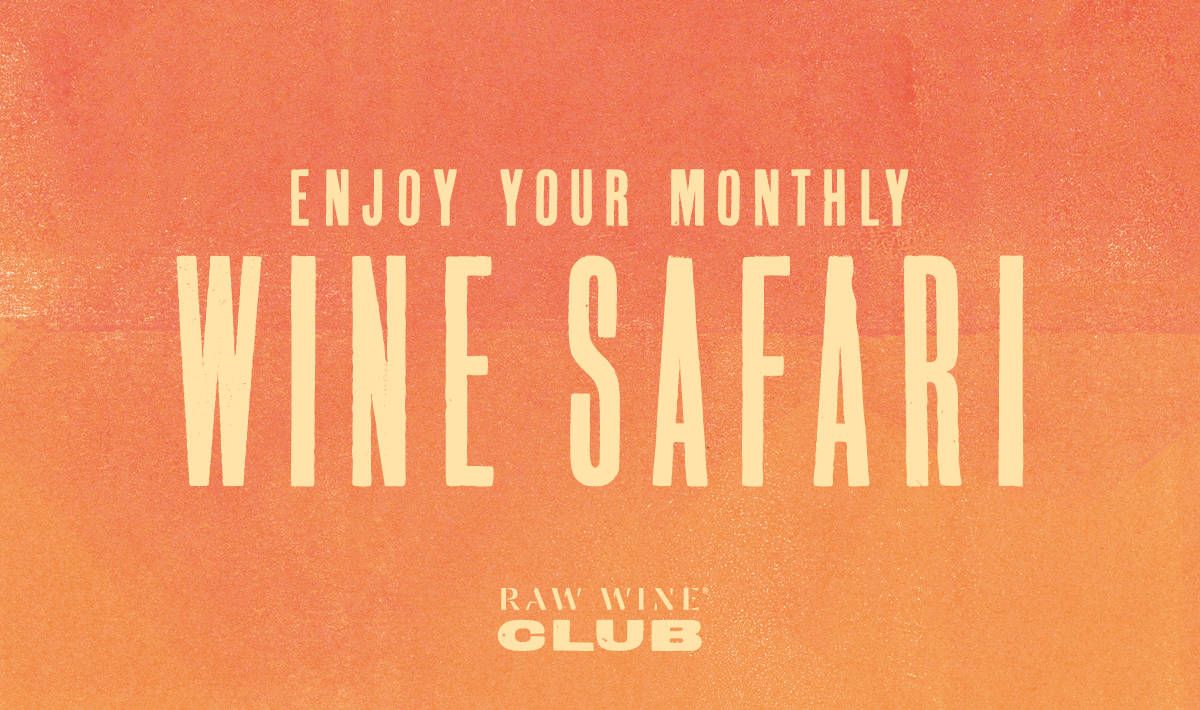
RAW WINE Club - Tasting Notes - December 2023 Selection
42 min read
For our last box of the year, we’re on a whistle-stop tour of the winemaking world. There’s a fresh, floral sparkling from upstate New York; a round, elegant, Spanish Palomino full of spicy peaches and citrus fruit; a delicious, mineral, almost smoky, Alsatian blend; a light, crunchy Slovakian red bursting with blackcurrants, mulberries and minty aromas; a chiseled, elegant, refined Croatian Babić grown on limestone terraces overlooking the Adriatic; and last, but certainly not least, a deep, intense, complex Chilean País with aromas of stewed black fruit, black mulberries and licorice root made by one of Italy’s most celebrated natural winemakers, Elena Pantaleoni.
I do hope you enjoy the wines - it is a selection made for celebrating, sharing and above all taking time. So happy tasting, happy holidays and here’s to wishing you all a wonderful start to 2024!
Warmest wishes,
Isabelle Legeron MW, Founder of RAW WINE
---
Wild Arc Farm, Aurora, New York, United States, 2021
Wild Arc Farm is run by Todd Cavallo and Crystal Cornish in the Hamlet of Pine Bush in the Mid Hudson Valley, New York State. They moved from Brooklyn in 2016 to try their hand at building sustainable food systems - including a home vineyard - in the granitic soils and Atlantic and Catskills microclimates of the area.
Q&A with Todd Cavallo
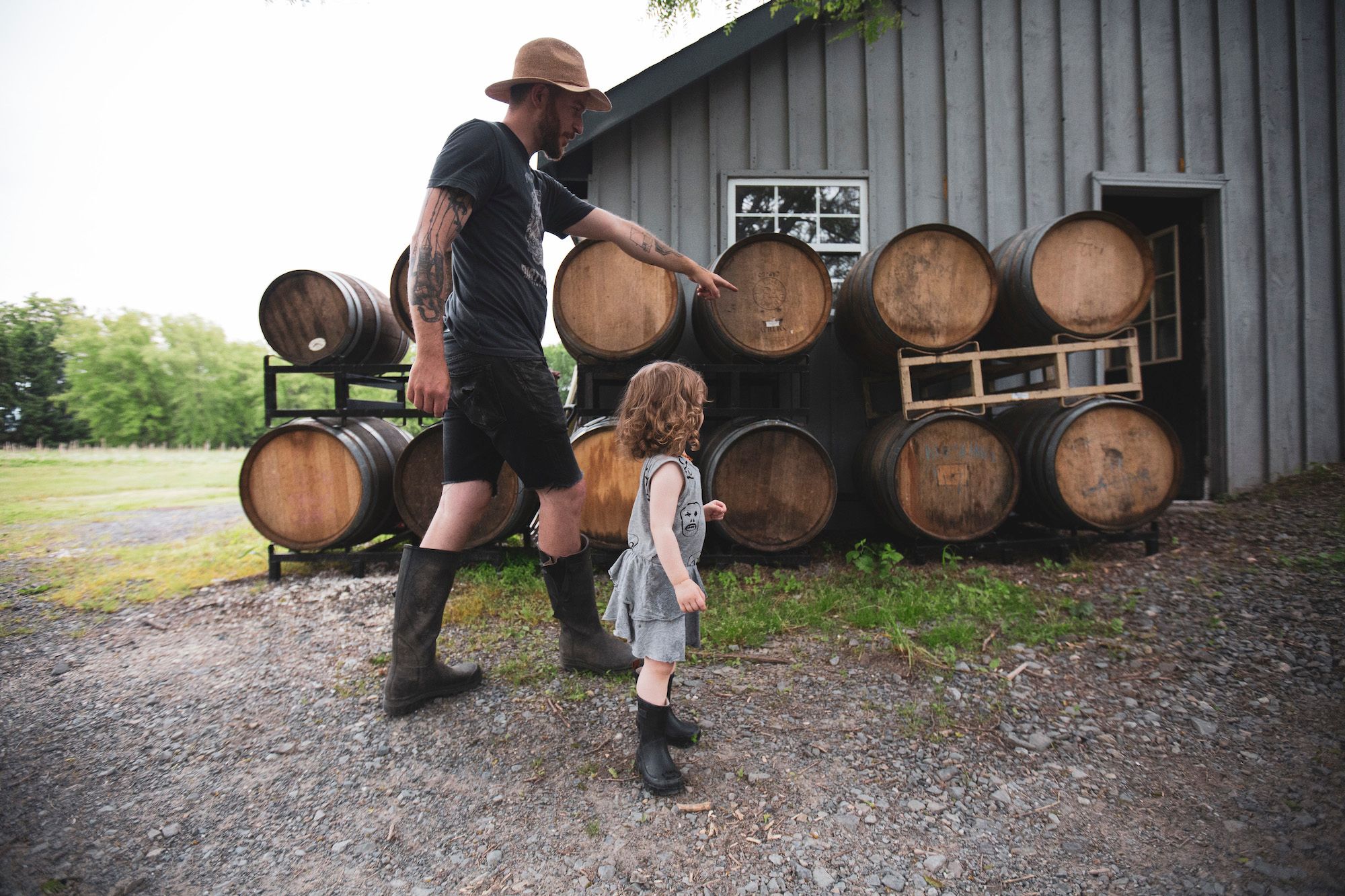
Can you tell me about your background - what were yourself and Crystal doing in Brooklyn before you decided to start the farm?
We both worked in wildly different fields. Crystal went to art school and worked for a while as a children's wear designer. I went to school for computer science and worked for a software developer. Doing things not entirely related to farming or winemaking, although my family has a history of running restaurants, grocery stores, and bars. My two younger brothers were working in restaurants and wine shops in the city for about 10 years before we moved up here. So, I had connections to the food and wine world through them, and I was a wine drinker myself, interested in organic and biodynamic farming and how that applies to wine for quite some time before we came up here.
We had done little experiments in fermentation in our Brooklyn apartments, making cider, kombucha, beer, pickles, sauerkraut, kimchi, all that sort of fun stuff but had never tried making wine, even kit wine or anything like that. We came in pretty unprepared, although we've got quite a lot of amazing mentors across the country here who helped us through our first season, including our friends Andrew and Janet from Eminence Road Farm winery up in the Catskills, who we processed our first vintage with in 2016.
Where did the desire to start the farm and become winemakers come from?
Like I said, we were wine drinkers and got deeper into the natural wine rabbit hole. The original idea was to move out of the city and commute for five years, keep our jobs, and not really change our lives too drastically. But we decided to try our hands at making a little wine the first year. Then we had broader plans of growing market vegetables, raising animals, and making a broader array of farmed things. That interest in organic farming and wine was always there, and then, on top of that, the interest in the food and beverage world and hospitality, which has always been kind of innate to me.
We were able to get some placements of that wine in what we considered important bars and restaurants in the city. And then we kind of thought, you know what? Maybe this wine thing will work after all. So we started scaling up pretty immediately after that first vintage. It turned from a pipe dream that might happen in five or ten years to, okay, this is working, people are interested, and let's go all in.
And why biodynamics?
It started as one of the driving forces as what we wanted to do here. We wanted to do more than just wine. We wanted to have animals and build a closed farming system, and at the time, biodynamics was an idea that I was familiar with. We started right away using all the preps, buying in almost everything since we didn't have animals here yet and weren't necessarily growing all of the botanicals we needed for the preparations. But we have since kind of moved away from full biodynamic practices.
We still spray some of the compost preparations on our compost piles and still use either silica or horsetail, which we're now growing here on the farm, pretty regularly to help combat mildew. But we're not doing a full calendar-based and preparation-based biodynamic system. We've taken what works for us from biodynamics and applied it to what works well here in this climate. And then we're also taking some ideas from general organic and regenerative organic farming.
We have our own animals now, chickens, ducks, and geese, and we're using their waste as the core of our compost that helps take our compost into a more nutritive compost that we can use every season along with wood ash that we produce here on the farm. So, we're not fully biodynamic, and I don't know that we had ever planned to get certified biodynamic. But we've taken what works for us and applied it to how things grow here in the colder, wetter northeastern climate.
Do you work entirely using grapes from your own vineyard, or do you outsource grapes, too?
We are still purchasing most of our fruit. We planted most of our vines in 2018, so we're just starting to produce grapes on our own property here and vinifying those for the second time this year. But we do manage a farm up in Valley Falls, New York, which has another three acres of hybrid grapes, Marquette and then a field blend that we've been managing and farming for six years. Those really only make up 15-20% of our production right now. The rest of our fruit is all purchased, in from all over New York state really. I spend a lot of time on the road to vineyards in the fall up in the Finger Lakes down in Long Island and then some locally here as well.
How do you determine which growers you buy from?
We've got a kind of a twofold approach to developing relationships with growers. On the one hand, organic biodynamic and regenerative farming were not really a big part of grape growing in New York state when we started. One of our first goals as we were developing these relationships was to find growers willing to alter their farming practices for us, on a small scale to start. Usually, we'd ask them to stop spraying herbicides in the first year so we could buy their fruit. We found a number of growers willing to take that first step with us, and over the years, as we learned what works for organic viticulture here on our farm, we shared that knowledge with other growers. We helped them move to organic fungicides and pesticides.
We have been able to develop a couple of really good relationships with growers that have moved in that direction for us. Rather than digging up more native grasslands on our property and planting a monocrop of grapes, it's a better net positive for the environment and for the state of growing in New York to find growers willing to move acreage that's already under vine, into more organic practices.
On the other hand, it was very hard for me to buy grapes for the first few years because they'd never heard of us. We don't have a track record of paying our bills, so we had to kind of scrap to get by. But now we're able to find growers who are growing organically already and ask them what in their production is not being purchased, get in there and buy some grapes that might otherwise go onto the bulk market. Things like the organic Concord that we started using last year, and the Aurora from this wine actually is from Buzzard Crest vineyard.
What are hybrid grapes?
Most of the grapes that we would know the names of are Vitis Vinifera, Pinot Noir, Chardonnay, Cab Franc - all those names that we know from wine bottles and from famous wines. Vitis Vinifera is not necessarily as cold-hardy or disease-resistant as a lot of the native American grapes. But around 100 years back, people started crossbreeding it with native grapes like Vitis Labrusca and Vitis Riparia. In that time, they've developed a number of varieties that are interspecies hybrids, making what I consider to be amazing fine wines that are also more cold-hardy. They don't have as much dieback in the winter and are much more disease-resistant. They do not succumb as easily to downy powdery mildew, black rot - all the diseases that we encounter here because we have a much rainier season.
What grapes have you used for Aurora and where do they come from? Can you describe the vineyard and its surroundings?
From Buzzard Crest vineyard, we get the Aurora and we also get the Concord that we make a sparkling carbonic wine out of and put into cans. Volume depends on how their season goes, because there are still disease pressures that can cause trouble. For example, this year we had a late frost in May that decimated much of the grape growing in New York state. They weren't able to provide us with as much, but they also have some Traminette, some De Chaunac, and some Cayuga.
The Aurora 2021 had a tiny splash, like under 5%, of the Traminette from the same vineyard. That Traminette is a hybrid of Gewürztraminer, and it's got a lot of the same really aromatic characters. It's a little floral, with light and elderflower notes. It had a couple of weeks of skin contact, so that's why you've got kind of a brassier, bronzy color in the bottle and a little bit of that floral, effusive nose.
Aurora is a very neutral grape and in 2021, we wanted to give it a little bit of a lift but kind of still maintain that single vineyard, single expression of an area rather than blending it out with some of our other grapes from elsewhere in the region.
How about the soil and the climate?
They're on Keuka Lake, so they're in the Finger Lakes, but they're not on the larger lakes Seneca and Cayuga Lake, which are the two larger lakes in the center. Keuka Lake is a little to the west, and it's smaller. I would say it probably doesn't have as large a mitigating factor on the climate as the larger, deeper lakes do. So it's not in what they would consider the banana belt up there where you can grow Vinifera as effectively. This grower, in addition to growing these hybrids that are more cold-hardy and do better without that mitigating factor, is also one of the only certified organic vineyards up there.
They have been for twenty plus years, just doing things the right way for as long as they've been able to. The soils up there are pretty varied because there's some glacial till up there, like there is down here. The Finger Lakes were created by the glaciers coming down from the north. They deposited a lot of varied stones on top of the bedrock. They're mostly a loamy soil. It's all about the proximity to the lakes up there and the angle of insulation. Everything's hilly around those lakes, which helps with drainage and keeps things dry throughout the season due to better wind flows from the west and off the lakes.
What are the challenges of organic farming where you are and how do the weather conditions affect the wine you make?
We always say our growing season is 12 months long because what happens in the winter really affects the entire next year of growth. This spring, we had a late frost in mid-May after the vines had already budded out, killing much of the fruit trees and causing a loss of 70-80% of our grape crop in our home vineyard. A lot of other growers, not growing as cold-hardy varieties, also suffered losses. Winter hardiness and late frosts or early freezes before vines harden off can kill production for the next year to three years, depending on the severity.
When we first planted in 2017, it was one of the worst winters in 100 years in the Hudson Valley. 80% of our vines died back to the ground, and even other growers with established vineyards saw vines die back, affecting production for 2-3 years. Freeze and frost events can severely impact production. This year, non-stop rain at least once a week posed challenges with constant mold and mildew pressure in the vineyard. Organic sprays, not being systemic like synthetic sprays, get washed off and lose effectiveness in the rain. Rain fosters Downy powdery mildew issues and black rot, making it a continuous battle to keep the vineyard clean and dry. We end up spraying more often than non-organic vineyards, but the materials are better for the environment and applicators. It's a big job, a lot of work.
What's the wine and natural wine scene like in New York State, and how has it developed?
If not already exploding, I'd say it's on the verge. Our friends Andrew and Janet at Eminence Road were among the few doing natural wine close to New York City 10 years ago. Since then, maybe half a dozen or 10 producers are either fully committed to natural wine or operating in that realm. The first certified biodynamic vineyard, Hermann J. Wiemer, in the Finger Lakes, got certified this year, marking a significant step for the industry.
As the natural wine community grows globally, we're seeing natural wines emerging from unexpected regions like Vermont, New Hampshire, Pennsylvania, and Maryland. With the increasing costs in established wine regions, people might turn to places like New York where land prices are more reasonable due to the potential for vine growing. Establishing New York as a natural wine region, with one of the world's biggest natural wine markets in New York City, is beneficial for everyone.
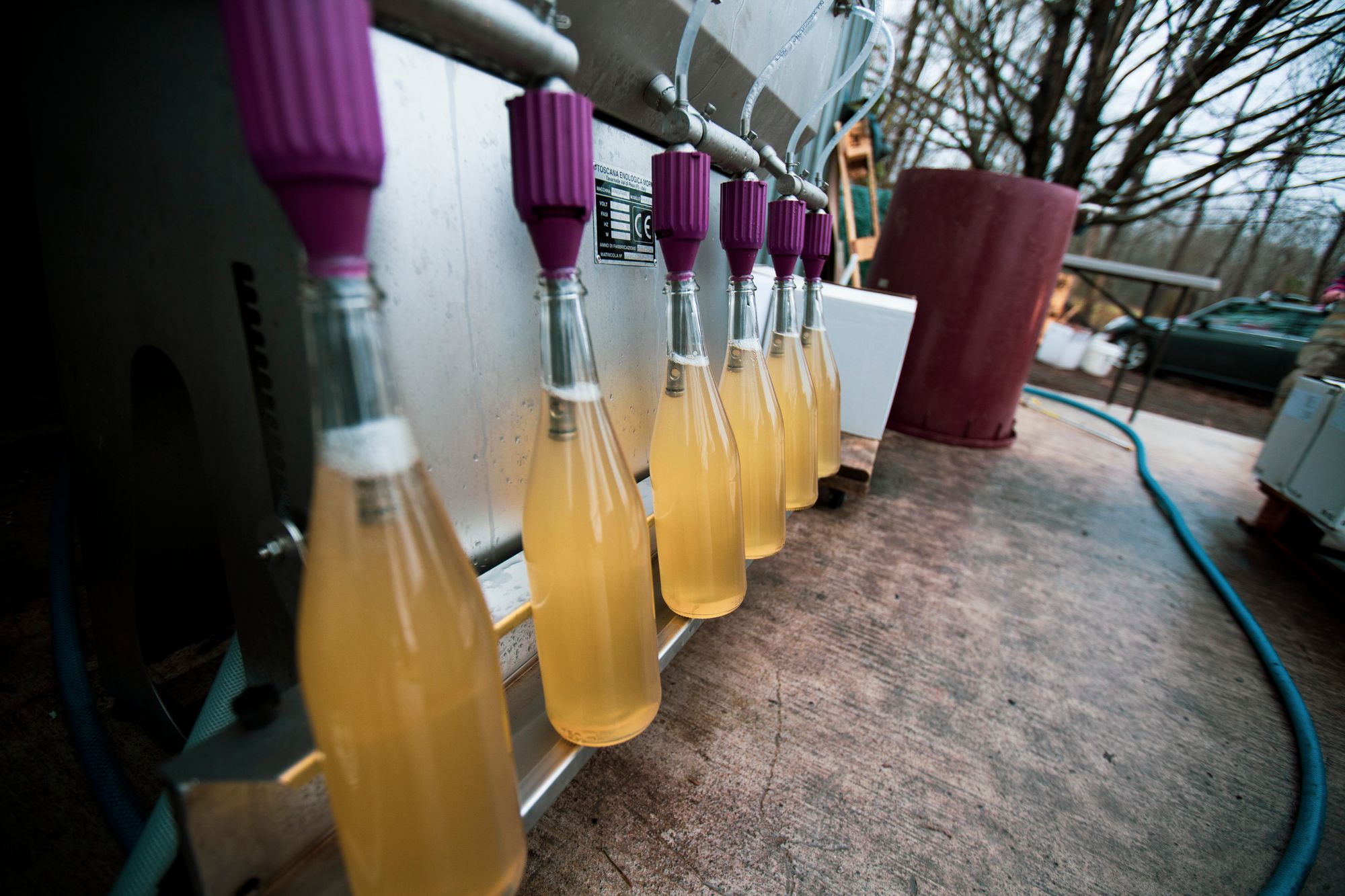
Can you talk me through the process of making this wine? From harvest through to bottling, including lengths of maceration, fermentation, ageing, vessels used, etc.
Usually, we process them right away, so most of our white wines undergo 12 to 24 hours of maceration on the skins to extract more phenolic interest. With colder climate wines that haven't developed as much flavor in the skins, we aim to extract more. After stomping the grapes in bins, we let them sit overnight or until the next afternoon, then press them in a 90-gallon basket press. The pressed wine goes into stainless tanks, and we avoid touching it throughout the elevage process. No stirring, no racking, just letting nature take its course, with lees acting protectively. We leave everything on the lees until we decide on a spring or fall release. Most wines spend 12 months in tanks before being ready.
This one was in tanks for a year until the next harvest. We decided to blend in a bit of Traminette for floral interest in the nose. Bottling is done using the champagne method without disgorging. We add local organic wildflower honey at bottling, letting it naturally restart fermentation and leaving all the lees in the bottle. Since we don't disgorge, it's more like a Col Fondo style, and the cold temperatures naturally stabilize the wine. Leaving lees in the bottle allows for more interesting development over time. It's a choose-your-own-adventure for the drinker – leave it upright for a cleaner pour or give it a little shake for a leesier texture. The honey, sourced locally as a substitute for refined sugar, adds a floral touch, representing another facet of the region's terroir.
Do you use any sulfites?
For these wines, there are no added sulfites. We use sulfites in maybe about half of our wines. It depends on the vintage, the condition of the grapes when they come in, and the fermentation process. We test before bottling to ensure there won't be any issues, and sometimes we'll add around 10 parts per million in the bottle. However, for this wine, it came in beautifully, fermented flawlessly, and the tests were clean, so we bottled it without adding any sulfur.
How would you describe the wine?
The grape itself, as I mentioned, is very lean and straightforward. We've bottled it since then as a single varietal without the addition of Traminette. It has a lean lemon-lime core with a laser-like acidity from the Aurora. As all our wines go through malolactic fermentation, it becomes more rounded with lactic acid, giving it a character more like lemonade meets limeade, than straight lemonade. The tiny bit of Traminette adds a lift, contributing to a white flower and white iris nose, along with hints of lychee. It's a nice, lean sparkler with a broader palette from malolactic fermentation and a floral, aromatic nose.
How does this vintage, 2021, compare to others?
In general, even the Aurora in 2021 was fairly robust. In 2022, we had a drought vintage, resulting in a leaner but more muscular Aurora for the base. That's why we let it stand on its own for 2022. 2021 was not a rainy year but had on-and-off rain, allowing things to ripen nicely without significant disease pressure. It would have been interesting to see how 2021 stood on its own, but with a bit of Traminette, it turned into something really exciting. That's actually what made me want to keep working with Aurora - we've we've now contracted with that grower to take as much as they'll give us every season.
When is it best enjoyed? Now or later, if people want to age it further in the bottle?
Similar to a longer tirage in champagne, where you get autolytic character due to the presence of yeast, you can achieve that with this wine. Storing it upright allows the yeast character to develop further into a yeasty, brioche-like quality. I'm saving half a dozen cases myself to see how it evolves over the next couple of years. Ideally, 3 to 5 years after bottling would be my recommendation, as these wines, with plenty of acidity from New York state, have the structure to age gracefully.
What’s the story behind the name of the wine, Aurora?
The grape is actually Aurora with an e or or Aurora you can use either. But yeah, we we leaned into the aurora put the Aurora Borealis kind of thing on the label and just and let that be the.
Any food pairings you’d recommend?
We say all of our wines are made for the table. With high acidity and lower alcohol content, they don't overpower any foods. This one, in particular, with its florals, pairs really well with a cheese plate - goat cheese or bloomy rind cheeses that have a bit of herbaceousness or floral character, enhancing and magnifying the wine's floral notes. Dried fruits and nuts that you might find on a cheese plate also work wonderfully. Due to the lychee notes, it also pairs well with Southeast Asian foods and anything with a bit of spice.
Isabelle's thoughts on Aurora - A light, fresh, floral, sparkling wine from upstate New York. Delicate and pretty, with low alcohol, Aurora is made from a hybrid grape variety (part vitis vinifera and part Native American grape) created in the 19th C. It shows notes of honey on the nose and soft melon on the palate, as well as a dash of tannins thanks to a bit of skin contact (12-24 hours of maceration). Aurora is a simple, crystalline, thirst quencher that speaks of its cool climate, northern home and makes for a lovely chilled apéritif.
TOTAL SULFITES: <10mg/L.
Akilia, Villa de San Lorenzo, Bierzo, Spain, 2021
Akilia is a winery run by Mario Rovira in Bierzo, Spain. It's a small property with 4.5 hectares of old vines of Mencia and Palomino, sitting at at 750m above sea level. They work organically to produce fresh wines with low intervention and low alcohol. Due to health issues, we have not been able to interview Mario for the Club. Further information on Akilia can be found on their RAW WINE profile.
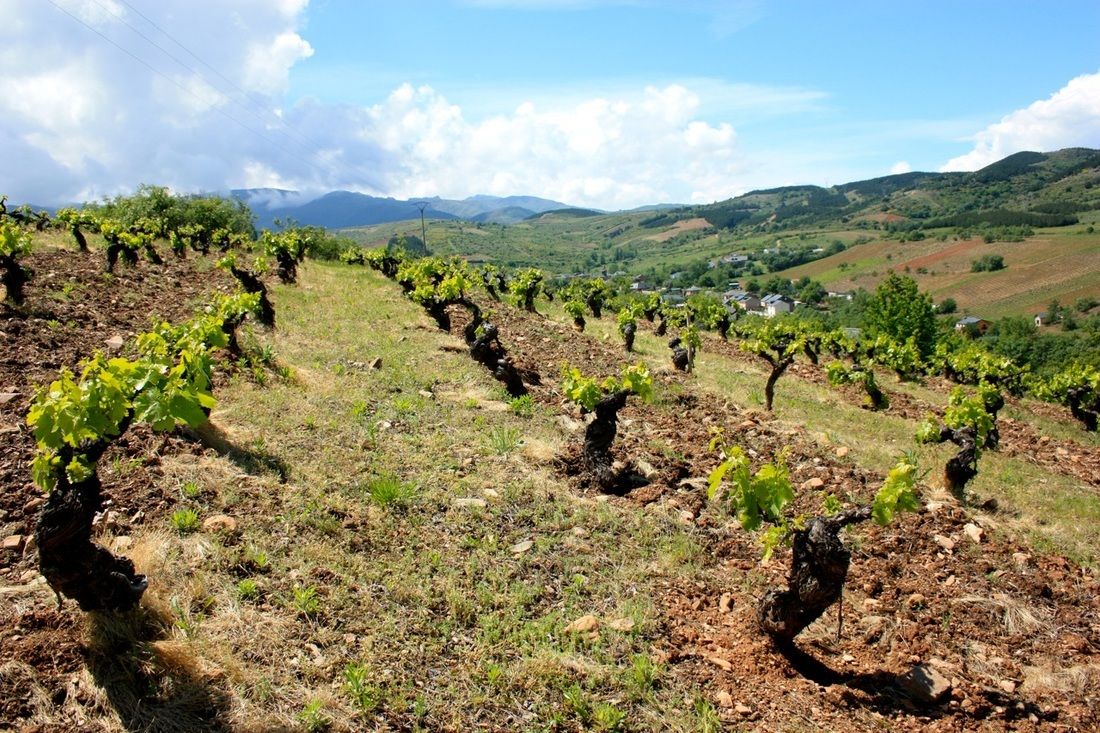
Isabelle's thoughts on Villa de San Lorenzo White - Like all of Akilia’s wines, Villa de San Lorenzo White is almost more Burgundian in nature than archetypally Spanish. This is anything but a fluffy natural wine. Precise, elegant and linear, it is fresh and delicate with a creamy texture reminiscent of oak due to some extended lees aging. Showing notes of greengage, lime skin, celery stick, celery salt and vanilla bean, it also has a touch of spicy peach about it. A delicious, classic tasting drop. Would be great with oysters.
TOTAL SULFITES: 30mg/L.
Sons of Wine, Soulographie, Alsace, France, 2022
Sons of Wine is a project by Farid Yahimi, who had worked in natural wine for 15 years prior to beginning the project, co-founding the Association des Vins Naturels in 2005. Farid began making wine in his garage, now making zero sulfur wine from organic and biodynamic growers in Alsace and Toul.
Q&A with Farid Yahimi
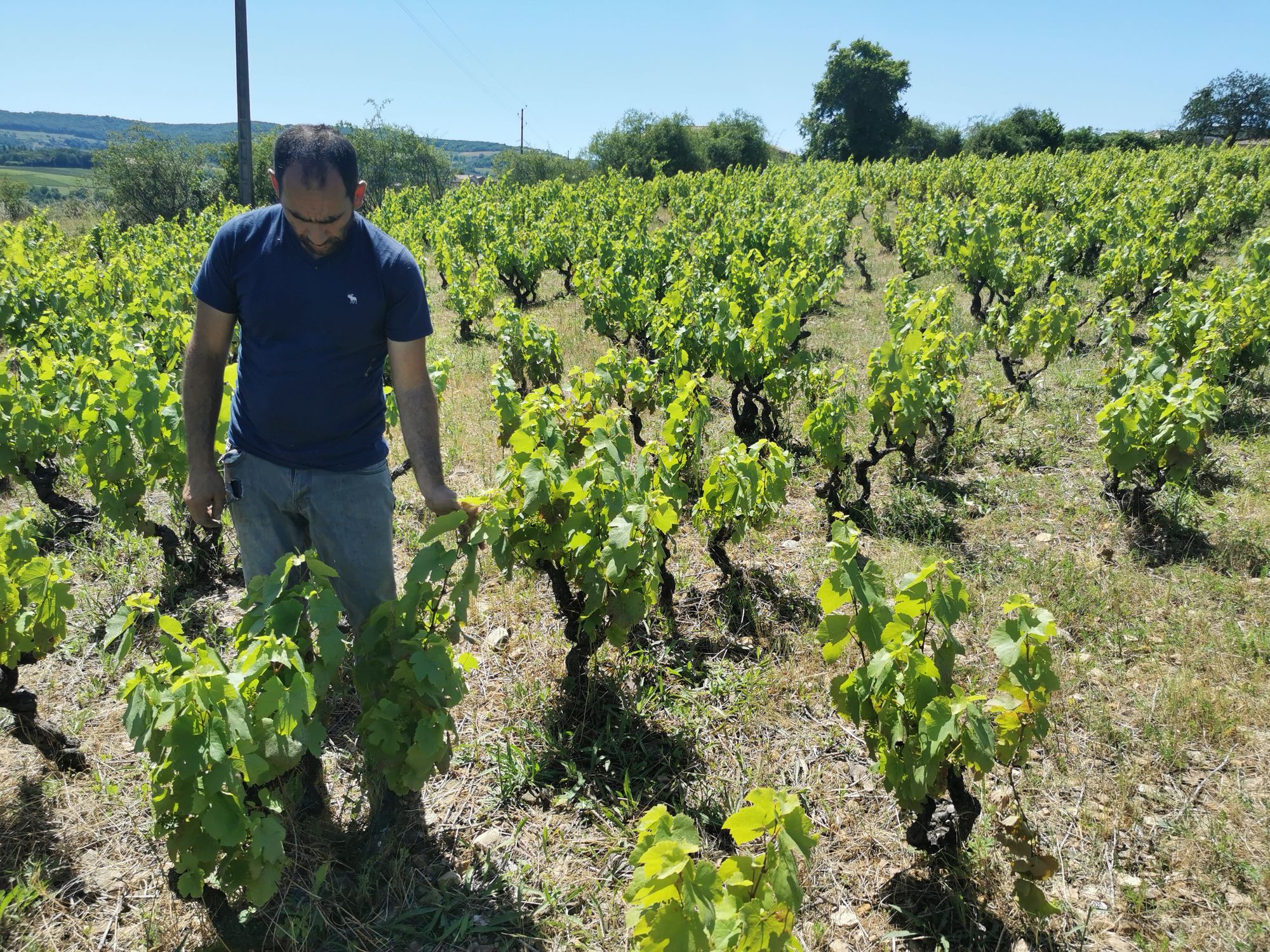
Can you tell me about your background - what was your entry point to the world of wine, and then natural wine in particular?
I'm not from a winemaking family, but my cousin has been passionate about natural wine for 35 years and knows a lot of the forefathers of natural wine in France. I was drinking conventionally made and conventionally tasting wines, then one day she said to me that it's not really wine, and encouraged me to taste natural wine. I never looked back. This was the beginning for me.
In 2005, my cousin and I started the Association des Vins Naturels in France, with three different classes of people: winemaker, merchant and drinker (Franc Buveur). Through the Association I made many friends in the natural wine world, and started to learn about winemaking as well. I began my own wine production of around 200-400 bottles per year just for myself, and in 2010 I acquired a plot, which I later had to let go of for personal reasons. I didn't want to stop making wine though and liked Alsace, so my friend offered me some Alsatian grapes so that I could continue making wine.
I had also made friends with the winemaker Christian Binner, and had visited him to give him a hand in the winery and absorb his philosophy. In 2017, on the way back from a wine fair in Italy, he asked me, 'Why don't you make wine for real and make it your job?' When I started out, I had two jobs: my own company in IT, digital communications and social media, and making wine. But it grew so fast that I had to choose one of them, and in 2018 I chose wine. Today, I'm happy, so it's turned out good.
In 2019, I then acquired 2 hectares of my own vines, 1 in Beaujolais and 1 in Lorraine, close to the Luxembourg border. I wanted these hectares to get the experience of working the soil and the vines, and develop expertise in biodynamics. In 2022, I founded a new estate with my girlfriend and a friend, called Domaine de la Légèreté which is the continuing story, 6 hectares worked on biodynamic philosophy and a deep understanding of the importance of well-balanced between life in the soil and the needed of vine to produce grapes easily.
Can you tell me about your current set up - your cellar and the vineyards you work with? Where are they based?
Both the cellar and the vineyards we work with are in Alsace, and all the growers are biodynamic. One of them is very experimental, working with what we call 'wild vines', no working the soil, no pruning, no treatments. And we work with a Spanish grape from Ismael Gozalo of Microbio. We are very lucky that he shares these with us, because they're 200-year-old vines. We don't blend those grapes as they're very special - we make one skin contact and one direct press.
What grapes have you used for Soulographie and where do they come from? What's the soil and climate like?
For Soulographie, we use a blend of Alsatian grapes: Pinot Blanc, Riesling, Auxerrois and sometimes Pinot Gris. The percentages are more or less the same each vintage, but it depends on volume and quantity of grapes. The soil is mainly schist or granite.
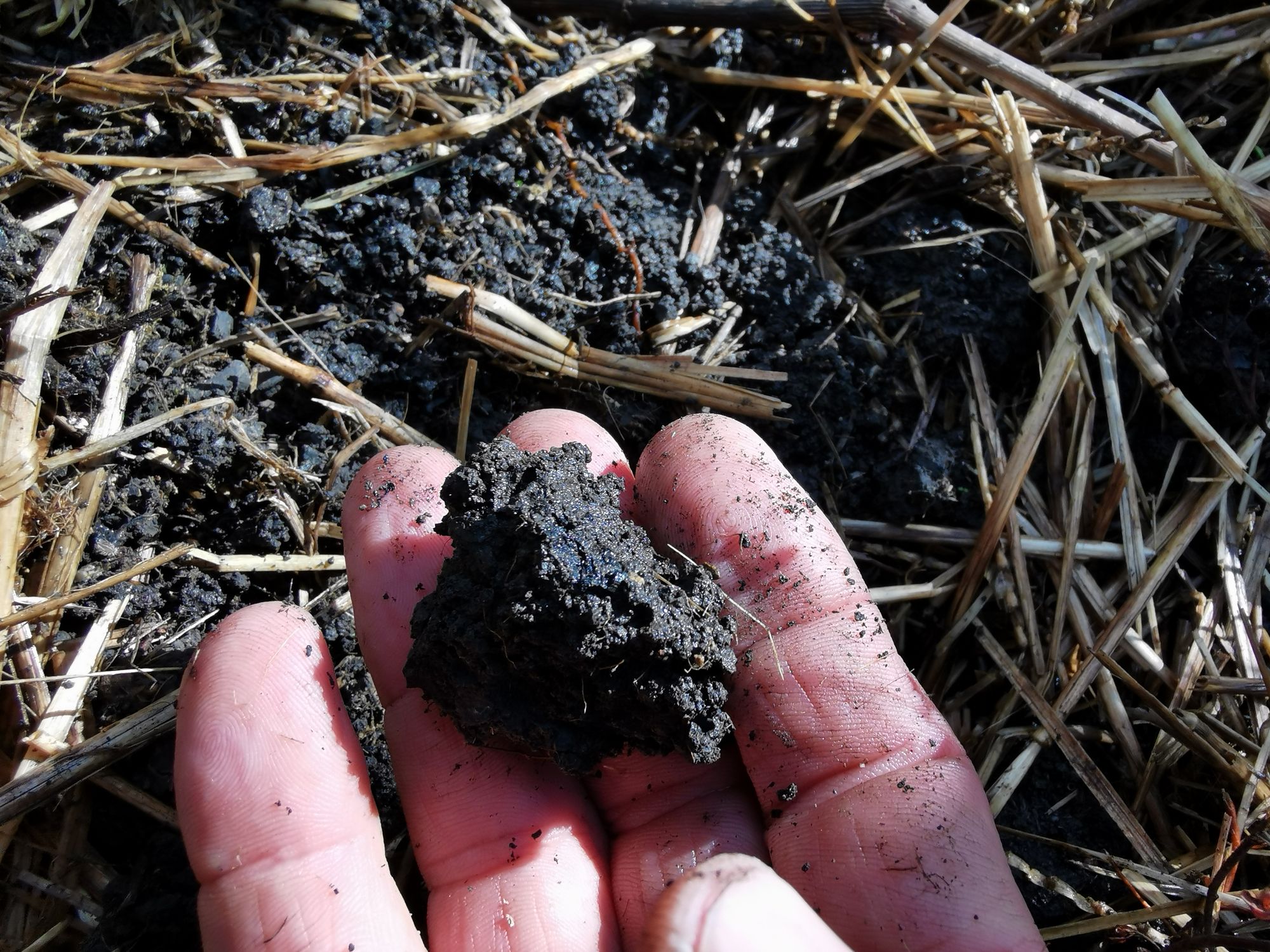
Can you talk me through the process of making this wine? From harvest through to bottling, including lengths of maceration, fermentation, ageing, vessels used, etc.
It's made from very ripe grapes using spontaneous fermentation, which can take anything from 1 to 4 months. It then ages in steel tanks from 10 months to over a year, again, depending on the vintage. The blending is direct after press.
Do you use any sulfites and what are the total sulfites per liter?
We use zero sulfites, but I'm not against them. I understand people using small quantities of course, for stability. If, one day, I need to use them, I wouldn't exclude it and I don't criticise those who do.
How would you describe the wine?
It depends on the vintage. 2021 is low alcohol and a little bit acidic, with nice tension. It was a wet vintage with low ripeness. 2022 is different - it was a dry year with a lot of ripeness, so more fruity and higher alcohol.
When is it best enjoyed? Now or later, if people want to age it further in the bottle?
This is an easy drinking, glou glou wine. Of course all wine has the potential to get better with time, but Soulographie is for drinking right now. Soulographie itself means the state of drunk - what you feel when you drink a wine. Some wine feels okay, nice, good, some not so good, and some talkative and very happy.
Any food pairings you’d recommend?
It's good with seafood. Or on its own as an apéro.
Isabelle's thoughts on Soulographie - This medley of grapes, by a very talented winemaker, is wonderfully playful and exuberant while also boasting a remarkably serious undercurrent. Meant for the pleasure of easy drinking, it is also deliciously mineral and terroir-driven. It is warm, generous and round, with notes of acacia blossom and white peach, as well as a smokey flintiness that is particularly apparent on the nose.
TOTAL SULFITES: <10mg/L.
Magula Family Winery, Carboniq, Slovakia, 2021
Magula is a family winery set amongst the grounds of a former monastery in Malokarpatská, Slovakia, and is run by Vladimír 'Vlad' Magula. It was founded after the family restored an ancestral vineyard in 2007. They work with varieties typical of the Central European region, and have been biodynamic since 2016.
Q&A with Vladimír Magula
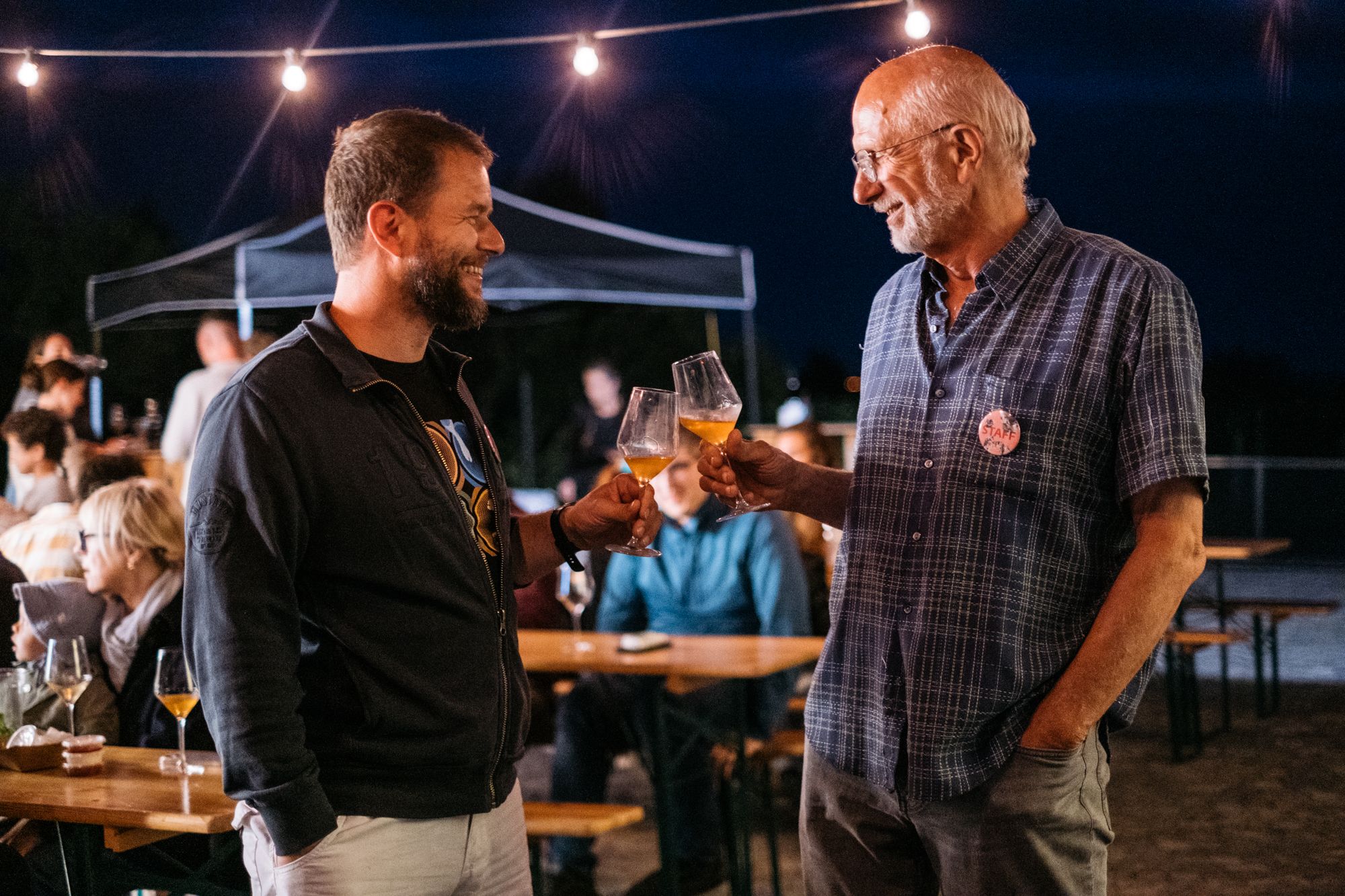
Can you tell me about your background - your ancestry in wine and how you came to bring winemaking back into the family?
We derive our winemaking lineage from my great-grandfather who started the winery here in 1931. Before him, I had many ancestors in different parts of the Habsburg empire who were winegrowers. However, after the communist coup in our country in 1948 and subsequent 40 years of communist party rule, private enterprises were prohibited and land was nationalised. My parents, and later myself, grew up in Bratislava - the capital of Slovakia - with no involvement in winemaking whatsoever. After the 1989 Velvet Revolution, my family inherited the plot where my grandfather had vineyards. We started with planting the chestnut orchard in 2000.
In 2005, my father suggested that we replant the vineyard and start making wine. It sounded like a great idea (because of course we had no idea what we're getting into!), so in 2007, we planted our first vineyard. And so the current history of Magula family winery started - it is a creation of my parents and my wife and myself. We embraced organic agriculture in 2012 as well as the concept of low intervention winemaking.
Suchá nad Parnou defines our terroir, because Suchá means dry in Slovak and it's a very dry place. Rainfall is substantially less than the vineyards just up the slopes of the Carpathian mountains. Our soil is deep loess and the plants need to develop large root systems to survive and prosper.
Why biodynamics? What or who was it that inspired you to work in this way?
Organic agriculture was obvious due to our strong inclination toward environmental responsibility. Biodynamics came into focus as we interacted with interesting winemakers and tasted their wines. We admired biodynamic winemakers and realized that the wines we liked the most often followed this approach. The idea of a balanced farm resonated with us. Since starting biodynamics, we have vines, chestnut and fruit trees, a small herd of horses, bees, and a cow.
It's cool but exhausting at the same time. It helps us realise the circle of life and see how everything works. The food we eat feels very personal. We originally lived 50 minutes away from the farm, but we moved here in 2019 - me, my wife and children - so they could go to school here. My parents have built their house for retirement on the farm too. We share the space and a life together. It's nice to have this integration of family. It's a beautiful place too, on a little hill among the vineyards and stunning views all around. The site was home to a monastery before, and we have some hundreds-year-old chestnut trees . It's a little slice of paradise.
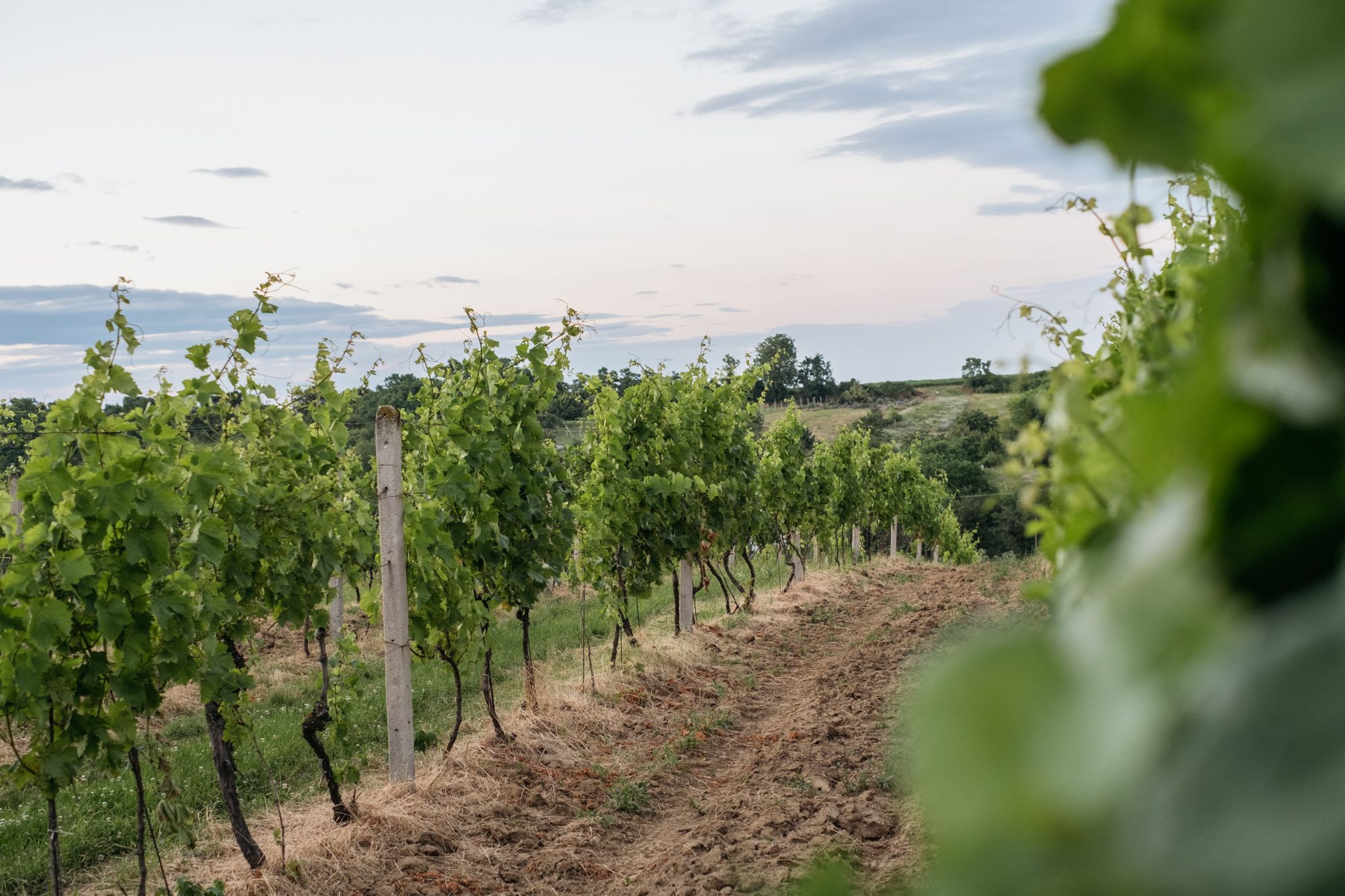
What grapes do you grow, and how many hectares do you have?
We have 8 hectares, predominantly cultivating blue grape varieties. The main ones are Modrý Portugal (Blauportugieser), Pinot Noir, and Frankovka (Blaufränkisch) for reds, and Welschriesling, Grüner Veltliner, and Devin for whites. Modrý Portugal is the grape from which we make Carboniq. It's like Gamay - fruity, thin skin and early ripening without tannins.
While our blue/white grape ratio is uncommon in Slovakia, our hot, dry climate is well-suited for red wines. It seems that whether the vintage is good or bad in conventional perception, the grapes always seem to achieve a balance in ripeness and acidity. Nevertheless, with we plan to focus on planting more white vineyards in the future and achieve more even ratio.
Can you describe the vineyard and its surrounds? We like to paint a picture for people.
Situated at around 210m above sea level, our vineyard is a unique transition point between floodlands to the southeast and the small Carpathian Mountains to the northwest. The landscape creates a picturesque view with two valleys, one named the Valley of Roses and the other the Valley of Wolves, converging to form a hill where our winery is located - Rose Mountain. Very strong names and archetypes. That's also why we play with the images of roses and wolves on our labels. It transmits the power and the energy of the place.
What's the average age of the vines?
Our vines range from 6 to 16 years for those we planted, and we acquired vineyards with vines that are 50 to 60 years old.
What grapes have you used for Carboniq and what's the winemaking process?
Carboniq is 100% Modrý Portugal. We harvest in mid-September, utilizing almost always 100% carbonic maceration. The winemaking process is simple, involving stuffing whole bunches into large stainless steel vats filled with carbon dioxide for two weeks. After pressing, the wine is fermented, racked twice, and then bottled between late April and early June. We've recently introduced a small amount of sulfites (10-15mg) one month before bottling to address an issue in the 2018 vintage.
It's the only wine in our cellar that stays entirely in stainless steel. This is because carbonic has little contact with oxygen and is more about freshness and fruitiness. Usually we bottle between the end of April and beginning of June.
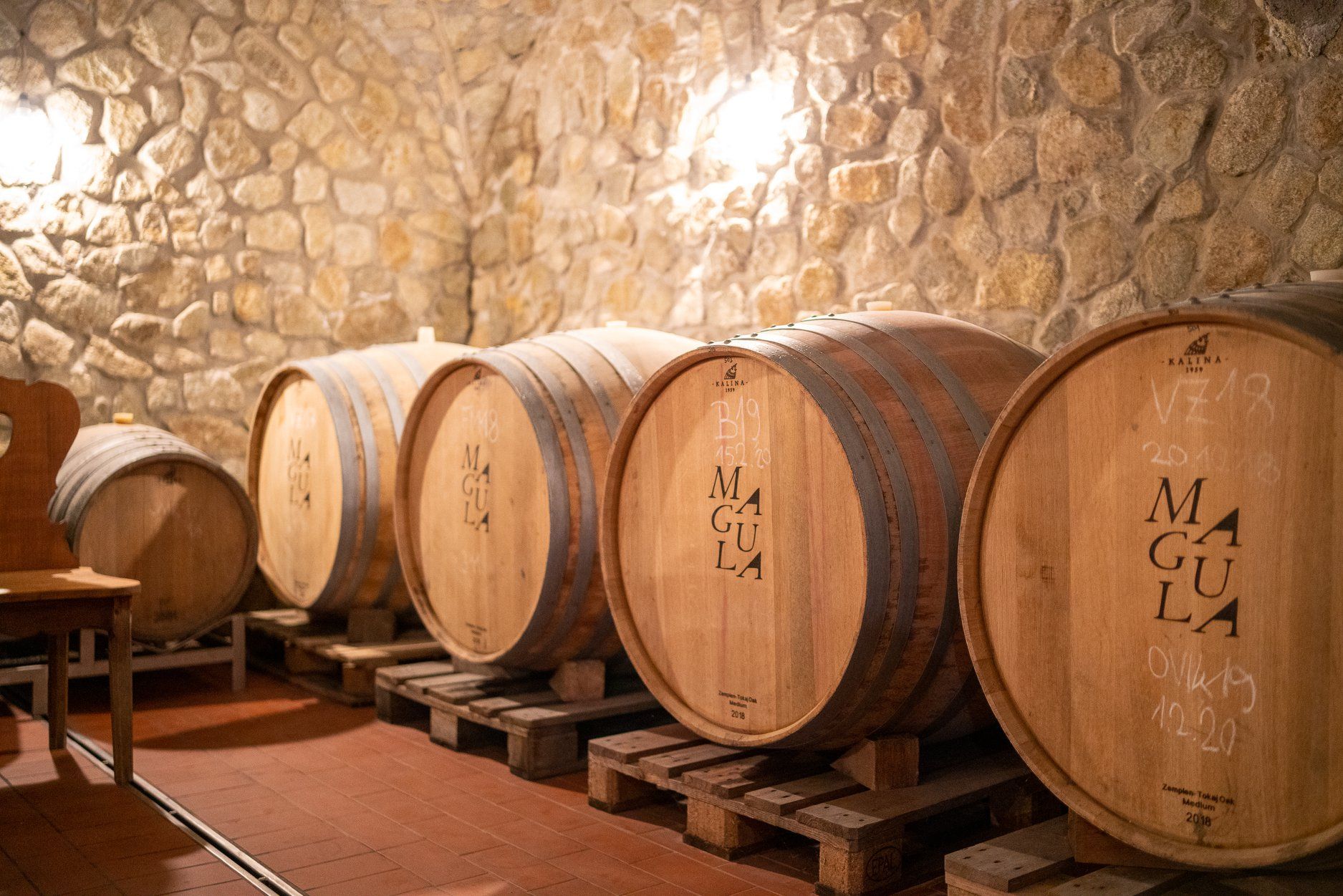
Do you use any sulfites and what are the total sulfites per liter?
We actually didn't use sulfites for several vintages, but in 2018, the wine got a little mousy, so I have started adding a little before bottling - around 10-15mg one month before bottling. The total sulfites are likely lower than the official 48mg/L, which is the level identified in the lab.
How would you describe the wine?
Carboniq is a classic glou glou wine - pure fruit, joy, and accessibility. With an alcohol content always below 11%, it's perfect for chilling. I like it as a pool party wine - fill a glass with ice and pour some Carboniq over it. In winter, we sometimes like it with spicy syrup and dried oranges, heated with steam - this is quite a popular Central European winter wine drink called Gluhwein.
How does this vintage, 2021, compare to others?
The 2021 vintage has slightly higher alcohol due to beautiful and ripe grapes, making it fuller and more towards classic red wine expression than the typical carbonic. However, it maintains consistency with no tannins and offers fruity notes like strawberries and red fruits.
When is it best enjoyed? Now or later, if people want to age it further in the bottle?
Carboniq is best enjoyed within three years from bottling. While I initially believed it had limited aging potential, I recently discovered forgotten boxes of old vintages (2012, 2013, and 2016) that aged surprisingly well, though they exhibited different characteristics. Generally, people enjoy Carboniq for its freshness and fruitiness.
Any food pairings you’d recommend?
Carboniq pairs well with dishes typical of our region, like baked chestnuts and roasted duck or goose. It complements heavy, fatty meats, cabbage salad, and potato pancakes. You can really gulp this wine. It's refreshing.
Isabelle's thoughts on Carboniq - I have followed Vlad for years and it has been a joy seeing him choose to walk on the wild side despite family and societal pressures to make wine more conventionally. The results speak for themselves. Crunchy and light, with a nice concentration, Carboniq is a glouglou wine. Easy drinking, it is ripe, soft and juicy with light, velvety tannins and a lovely, earthy, bitter/sweet finish. Expect notes of crunchy red berries, rhubarb, blackcurrant, ripe black mulberry, cocoa, prune as well as a dash of mint and black pepper. Would be delicious alongside cold meats and pâtés on Boxing Day. Serve on the cooler side.
TOTAL SULFITES: 48 mg/L.
Vinas Mora, Andreis, Croatia, 2021
Vinas Mora is a winery run by Krešo Petrekovic in the UNESCO World Heritage listed town of Primošten in Dalmatia, Croatia. The name is a rough translation to 'Wine from the Sea', and they work primarily with local varieties, such as Babić and Barbba.
Q&A with Krešo Petrekovic
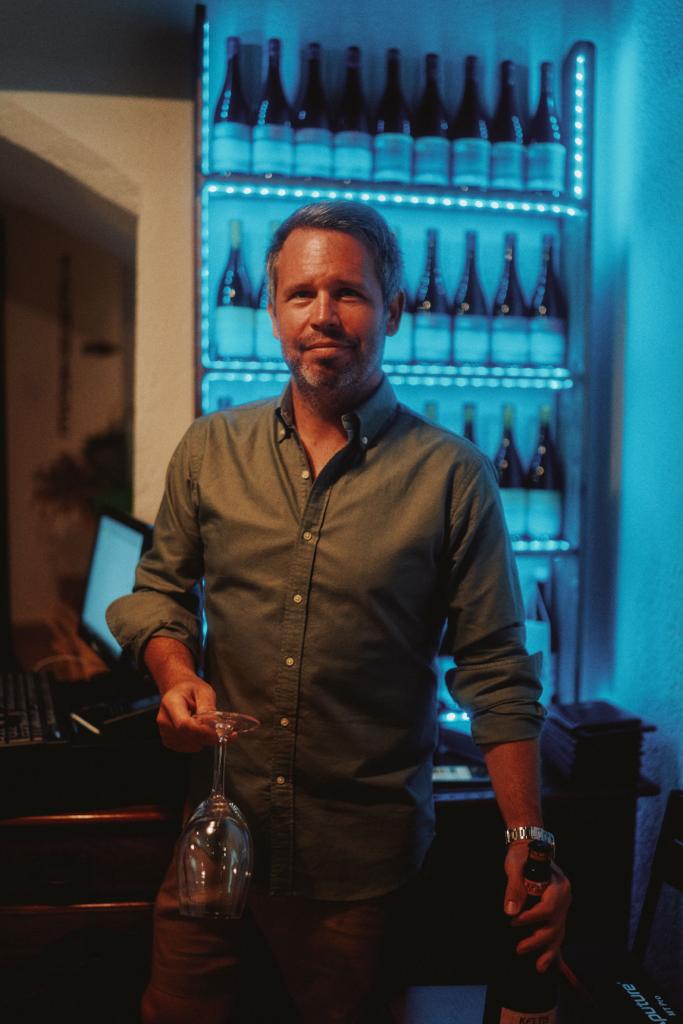
Can you tell me about your background - how did you come to be a winemaker?
I grew up in wine country in Slovenia's Lower Styria. Wine was always around and my family made wine for their own purposes. In Communism, almost everyone had their weekend house, vineyard, cellar, etc. You weren't allowed to produce wine for commercial purposes, but you could for yourself. It was everywhere, people had parties at the weekend in their cellars. We always had good wine in the house and my parents hosted dinner parties. I always found it really interesting hearing the conversations they had and I started tasting wines early on. I was interested in learning.
My father started a wine competition when I was 12 years old and they let me smell the wines and write notes. I was really intrigued by all of the nuances in them. Now, it's been 35 years of that and they've been doing it with friends, with local growers. That's what kicked me off in that direction. I started to buy wines and at 14-15 years old and, when I was allowed to go to bars and clubs, we'd go to restaurants instead to share wine. It was a strange youth - experimenting with wines instead of having the regular fun and dancing in clubs.
I then moved to the US as I was playing guitar, and joined a music programme which started in 2000 in LA. I moved to NYC and had to start working, as music was not so easy to make a living from. I already had some wine knowledge and I was 21-22 years old at this point, so it was a very rare thing. I started working in restaurants but that was very hard, and little by little I started getting involved in wine distribution. I met Zev [Rovine, of Zev Rovine Selections] in 2008, and we started to grow to what we are today. We met a lot of winemakers and did a lot of travelling. I always knew that I had an ability, a talent to make wine which came from cooking. I understood flavors and wanted to translate this to wine. In 2016, my dad retired, and I took over his winery. We expanded under the label Podrum Franjo.
In 2020, I arrived in Primošten, situated in the south of Croatia. A beautiful mediterrannean village on the Adriatic sea, well known for its Babic wines and rocky limestone soils. Babic is a flagship red wine in the Baltic region and considered very special, so I always wanted to do something here, but I couldn't have dreamed for it to happen so fast. As I was importing, I met a winemaker selling bottles by the side of the road. I tried it and was lucky enough to create a label and brand for him, and then we started to discuss the possibilities of growing that project. I saw that it would be a good idea to have wines divided in territorial ways and to grow the appellation aspect because, during the Communist era, we weren't given appellations.
We have very unique terroirs here and I wanted to share them. So that's how I came to say yes to getting involved in that. We took over a cooperative that went out of business, and was purchasing grapes from 100+ small growers. The growers had nobody to sell their grapes to, so we stepped in to save the vintage. We had the old cooperative building and thought it was going to be pretty small scale, then everyone showed up and it was chaos. At that point, we realised what we needed to do to define the different terroirs, and landed on the wines we produce today: Kaamen 1, Kaamen 2, Kaamen 3, Barbba and Andreis. And we're now on our fourth vintage.
Can you tell me a bit more about the terroir, the soil and the climate?
This is a relatively small zone, as with any place that produces extraordinary quality of any kind. It has around 10-15 kilometers of this really dense limestone formation. It came about from pushing from the Adriatic Sea into the mountain ranges, and these tectonic plates crashing together and creating a huge mountain of rocks. There was this survival mode from people in the toughest places - they had to produce something and were working in this tough, rocky soil using hands only,.
It took a lot of effort to produce the first vines and I can't say exactly when the first monoculture was born, but Babic quickly prevailed and came to be the only variety that could survive in this harsh terroir. It has a tendency to be resistant towards heat and to produce very small, high-quality yields. In the end, it produces these very gentle, elegant wines which are kind of a rare thing to have in the Mediterranean climate, which often produces much bigger wines. This feels more continental, almost more Pinot Noir-ish, Nebbiolo-ish, cold climate Syrah-ish in style.
There's a large variation of vintages as well because of the stress of the water we have, with little rainfall. That's a big part of the terroir - the wines are usually under stress, so produce relatively low alcohol and have this long ripening period that creates high, very ripe acidity. It creates a balance and a finesse in the wines.
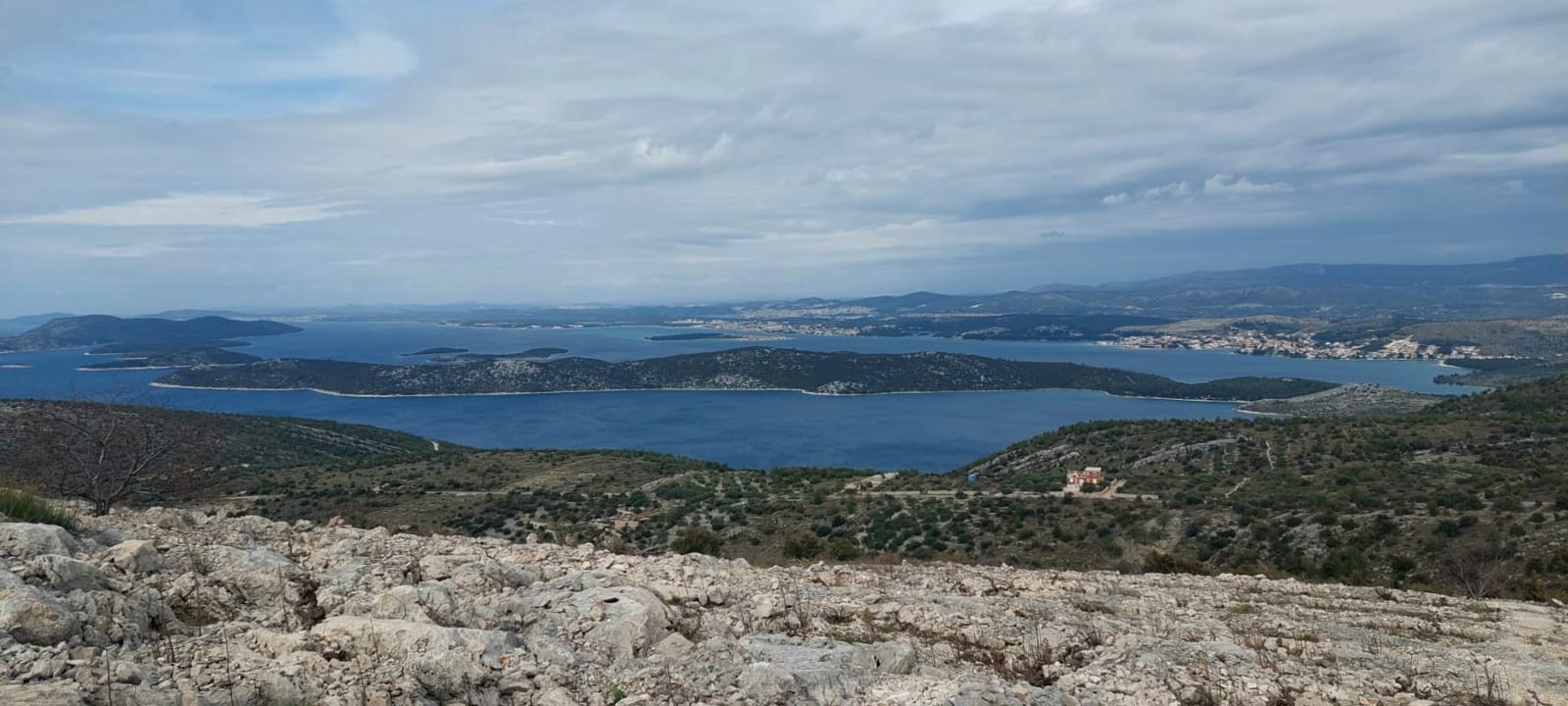
What and who has influenced your style of farming and producing?
A lot of people! Friends I met over the years offered advice on what to do and what to avoid. Interfering with nature is kept minimal; we rely on the natural elements, like rainfall, which becomes increasingly stressful every year. In terms of viticulture, when we took over, many vineyards were abandoned, farmed by older individuals. We went from 240 hectares to 35, aiming to revitalize the land and make the vineyards more dynamic. Dynamizing them energizes the poor soil, reducing dependence on water.
Learning from the elderly is crucial and respecting the history of the area is essential. Many came with the idea to make Bordeaux-style wines, resulting in dense vineyards and devastating outcomes. Learning from the oldest writings guides how to cultivate vineyards in this extreme environment.
With the wine styles, I am deeply influenced by wines from Northern Rhône, loving their similarity to what we have here. Burgundy and Nebbiolo are favorites too. Although difficult to obtain, I was lucky to get a local wine, fulfilling my dream of creating something unique. All the qualities I seek in wine are found in the best places here. The energy in the wine resembles wines from various regions I admire. Tasting wines when I was younger, I'd think, "This reminds me of some Barbaresco I had years ago." I believed that with more effort, it could be truly special.
Influenced by regions with similarities, I thought about what Frank Cornelissen did on Etna, coming back to create something special. Similarly, I felt the need to contribute to this great place. Putting effort into reviving viticulture and wine, with the hope that others will follow.
Though there are already some positive results, the export market remains limited. But showcasing our wines globally has started gaining attention, particularly among younger people.
Can you tell me about the natural wine scene in Croatia?
Natural wine is a relatively small movement in this region, with more producers making great wines, but unaware or not explicitly labelling them as natural. Roughly 10 wineries, perhaps even fewer, are part of the export market, which is a shame.
One significant factor is the legacy of the Communist era, which discouraged production from small family wineries. Another contributor is the strong reliance on tourism, a substantial part of Croatia's income. Many here focus on producing wines for tourists seeking simple, inexpensive options—what one might call 'beach wines.' This approach is seen as an easy, albeit lazy, path in the business. The people who are successful in natural wine are the ones who export, because otherwise they're all selling to the same market and there's too much competition.
Croatia, particularly this region, possesses incredible terroir—a unique blend of Pannonian, Alpine, and Mediterranean influences. The potential to produce some of the world's best wines exists, stretching from the Slovenian side to this location. As far back as the Romans and Greeks, people have been drawn to the region for its potential to yield magnificent wines. You just need the right mentality to be able to capture it.
What grape varieties do you work with and how many hectares do you have?
Our winery focuses on producing wines exclusively from the prime vineyards of Primošten. These vineyards, predominantly featuring the resilient Babic grape, thrive in the unique stress conditions of this specific zone.
As the limestone terrain transitions to the inland zone, the soil becomes richer with red clay and cooler climates, supporting the growth of Plavac, a local variety known for its light red wines reminiscent of a Mediterranean Pinot Noir. The two main red grapes in Barba wines are Babic and Plavac. For the white grapes, we use Debit and Maraština, creating a unique blend that reflects the local tradition of blending white and red wines.
In 2021, we introduced Plavac in Andreis wines to showcase terroir the differences. The wines follow similar vinification processes to emphasize these distinctions. Plavac is sourced from a plateau 10-12 kilometers from Primošten, surrounded by the sea and 200 hectares of organic-certified vineyards with crushed limestone soil. The addition of Plavac imparts a Mediterranean character to the wine, enhancing its fruit-forward profile.
Describing hectareage in this region can be challenging due to the unique and traditional local farming practices. The bush vines, grown 1-3 meters apart in small terraced plots, form a protective barrier against wind and heat. We control approximately 15,000 vines in the Kaamen 3 zone, and in 2020, we acquired a cooperative with additional vineyards, collaborating with various growers under lease agreements.
Our commitment to the local community led us to assist growers who faced challenges in finding outlets for their grapes, and the winery now produces between 60-85,000 bottles annually
What's the average age of your vines?
The vineyards cover a range from 15 to 115 years old. A key wine of the estate is Kaamen. This village wine represents our zone, showcasing vineyards from sea level to 450 meters, spanning east, west, north, and south. Kaamen is a multilateral blend, offering a comprehensive taste of our territory.
Kaamen consists of three categories: Kaamen 1 (never bottled, kept exclusively in the cellar), Kaamen 2 and Kaamen 3. Kaamen 1 contains everything, with a premier cru and grand cru. Kaamen 2 comprises high-altitude vineyards ranging from 30 to 60 years, and even older in some cases. Kaamen 3, in the high-altitude zone, features generally older vineyards, around 60 years and above.
The main focus of Vinas Mora was to create a terroir, a challenging task given the prevalent practice of grape purchasing based on sugar content. To address this, we insisted on a system based on designated sites that traditionally produce exceptional results. Despite initial skepticism, we successfully produced wines with lower alcohol content, deviating from the local preference for higher alcohol levels. This departure from the concept of focusing solely on sugar content became the most significant change at Vinas Mora, emphasizing the importance of terroir over alcohol levels.
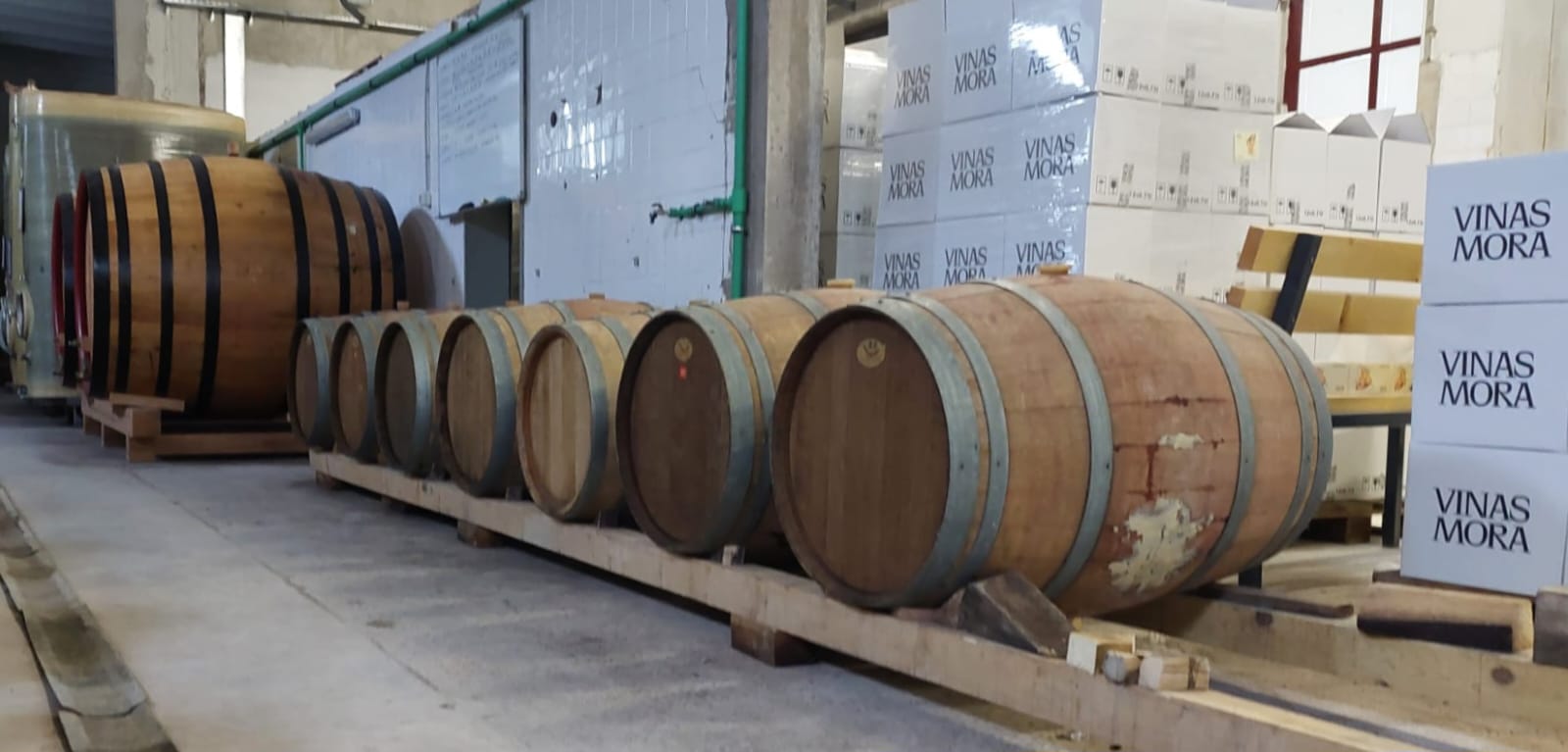
Can you talk me through the process of making this wine?
I take particular pride in this wine as it required a specific approach to its production. I didn't want it to be just another Babic from the zone. In the first vintage, I was almost apprehensive due to the high grape quality and the inherent power of the wine. I recognized its enormous potential, but I didn't want it to overshadow or overpower the delicate, perfumey, and perhaps more continental wines of Primošten. In the first vintage, I decided to vinify 30% of it as a rosé, and it turned out to be a brilliant idea. This approach opened up the wine, softening it and dialling it back a bit. This sets Andreis apart from the other Kaamen wines. The 30% is crushed and then goes into vats for fermentation, while the rest depends on the vintage.
We typically macerate for another 3 days after fermentation, which can extend up to a week, depending on the feel and progress of the grapes. The entire process is done in thousand-liter plastic containers and everything - including pigeage - is done by hand, a demanding task that requires continuous attention. After 4 to 7 days, 40% of the wine is transferred to neutral oak barrels, while the rest goes into old resin-lined fiber tanks. The fruit focus is vital, not to overwhelm the wines with oak and to preserve the special fruit character of the region. Our wines mature quickly and are ready to drink 3 or 4 weeks from fermentation completion. This allows us to sell the wines at the right time to cover expenses. Fortunately, the wines don't require extended maturation; they just need time to settle down.
Do you use any sulfites and what are the total sulfites per liter?
We use a minimal amount, right at the beginning. During the crush before fermentation, we add 10 milligrams per ton. It might seem very little, but it's important to ensure it stays clean and fruit-forward. The same amount is added before bottling, unless we see this as unnecessary. The wine analysis consistently shows high acidity, resulting in around 6g in Mediterranean wines and a low pH. Given these parameters, the wines don't require much sulfur. In the end, the total sulfite content might be around 20 milligrams or so.
How would you describe the wine?
Andreis holds a special place for us as it truly reflects the terroir. As our entry-level single terroir wine, it's important that it embodies the essence of the region. We produce a substantial quantity of Andreis, and despite being at an accessible price point, it stands as an exceptionally graceful wine. It reflects the characteristics of the Primošten territory, and is a wine with a more open, generous style of Babic, leaning towards a slightly darker cherry, maraschino profile, coupled with garrigue notes and the signature Mediterranean herbs found in all our wines.
The focus is always on maintaining good acidity, and although the wines are quite young, they are released relatively late. The 2021 vintage, for example, required extra time. While Andreis is considered our entry-level wine, it transcends that classification, evolving into a more complex and robust character over time. This wine, especially after the introduction of Plavac, gains an additional layer of complexity, requiring a bit more time to mature fully. It's a unique and evolving expression that reveals its depth and complexity with patience.
When is it best enjoyed? Now or later, if people want to age it further in the bottle?
I believe the wine had really come into its own in the last three months. Previously, it exhibited a slight reductive quality, but now it has reached its peak. Its body and size are well-balanced, with alcohol sitting right in the sweet spot. As wine producers, we tend to appreciate the energy of young, fruity wines with their vibrant tension and youthful aspects.
At the same time, it's a wine that can easily be enjoyed over the next decade, depending on personal preferences. I anticipate that this wine will age exceptionally well for the next 10-15 years.
Any food pairings you’d recommend?
I have a lot of red wine stored in the cellar, but personally, I appreciate the vibrancy of white wine, especially living in the Mediterranean. I think a lot of red wines are often overshadowed by dominant tannins and various additives. So my approach is to create red wine with white wine characteristics—capturing the terroir, minerality, and the essence of the soil.
This approach allows our wines to pair well with a lot of things. Here in our region, where grilled fish is a common delicacy, we often begin a meal with a slightly chilled red wine. It pairs exceptionally well with grilled fish and the abundance of great seafood available. Our local tradition includes fish from the grill, often accompanied by various Mediterranean-inspired stews.
For instance, one local dish called Brodetto involves fish poached in a tomato broth with vinegar and herbs—an excellent pairing with our wines. Another local favorite is Pašticada, a beef dish braised in prunes, red wine, and vinegar, which is a great match. The wines also pair well with any grilled dishes.
Our wines work well with seafood without causing any of that metallic aftertaste that can sometimes come with red wines.
Isabelle's thoughts on Andreis - This mid-/full-bodied, refined, indigenous Babić, grown on limestone terraces overlooking the Adriatic, is both very mineral and super elegant. Long, juicy and floral, it has a lovely tannic bite, a chiseled texture and is incredibly moreish. Showcasing aromas of violets, orris root, blueberries and licorice, it is also earthy with notes of iron on the finish. This is a wine from a great terroir, which holds its own even when drunk alongside aromatic, southern Indian curries and dosas (as I did while on the road for our fall fairs).
TOTAL SULFITES: 20mg/L.
Agricola La Mision, Pisador, Maule, Chile, 2020
Agricola La Mision is a joint project by Elena Pantaleoni and Nicola Massa in Maule, Chile. They grow grapes from centenary plants to make wine using traditional local methods.
Q&A with Elena Pantaleoni

Can you tell me about your background, your work at La Stoppa and now with Agricola La Mision?
I'm from Piacenza. My father was a printer, as was my grandfather. My grandmother had a bookshop - and books are my other passion. From the age of 22 to 26, I had a bookshop of my own in Piacenza. I studied languages at school and was young and independent. Meanwhile, my father bought land some 50 years ago now, which became La Stoppa. There were already vineyards there. He did this not as a hobby, but as a second job. Then he passed away when I was 26 and my mum asked me to go and help her. I left my job in the bookshop and decided to be responsible and more useful to my family businesses.
In 1991, I moved to the countryside where we have the estate and I was lucky because Giulio Armani, who has his own project Denavolo now, was working with my parents and still works with me today. I didn't have any studies in enology or viticulture, so he helped ensure continuity in the winery and taught me a lot on the technical side. My mum was 56 when my father passed away so was still young, and had a friend living in Chile. She wanted to go away and moved there, importing Italian food products. After a few years, she bought land and planted some vines. It's always been my mum steering my decisions! 3 years ago, she came back, but she's why we have this link to Chile.
It all started by chance really, and I found winemaking was a very interesting job - it allowed me to be creative and to be myself. My mum said to me - selfishly but also generously - you have to make this estate your own, if I stay, you'll never grow up. And after 32 years, I've really found satisfaction in this job and am able to pour all the things that are important to me into this estate.
How did Agricola La Mission come to be?
I had the opportunity to go to Chile almost every year to see my mum. At the beginning I just went to see her, then I made friends there, and then I started travelling around Chile. 10 years ago, I discovered all this patrimony of very old vines. There was no phylloxera in Chile, and they had some Spanish varieties which had arrived in 1550, especially Pais. Very near to my mum's estate, 1-2 hours south, there's this amazing treasure of thousands of hectares of very old vines, all bush vines, predominantly Pais.
Very few people knew about this. People from Chile always managed the vineyards and vinified the grapes, mainly for personal consumption, but Louis-Antoine Luyt - a winemaker and friend of my mum's - was the first to really give value to that and speak out about it. He told me, there's this huge thing here and I'm by myself, we need more people to make more wines here and spread awareness about this totally different side of Chile. Worldwide, Chile is largely known for cheap wine, made using international varieties, mainly French varieties, but this part of Chile's wine history is really important, and really special.
In 2015, I decided to start a new project with my partner Nicola Massa and purchase some of these grapes. We started with a 2016 vintage, we selected vineyards nearby and restored my mum's cellar. We started out purchasing grapes from Maule, north of Itata and Bio Bio. The Maule Valley is warmer, further from the sea and very dry. Itata wines are generally lighter, less deep in colour and more elegant maybe, as it's closer to the sea and the temperature varies more from day to night.
The idea was always to purchase grapes from growers - never to buy vineyards, but to show the people who own them that what comes from their vines has worldwide appeal. It's very natural viticulture, they use little to no treatments. They use some sulfur, but no copper as it's very dry and windy. The grapes are very healthy and crunchy. It's amazing - I've never seen these type of grapes before. And we have a very natural vinification.

What's the natural wine scene like in Chile?
In the last 10 years, a lot of young, new producers have been emerging in Chile. Each time I go back, I find a new young producer. It's really interesting and I'm proud that I paid a small part in this. Helping the growers develop was the idea behind the project, to raise awareness of these Chilean wines, and give the strength and pride to the people who own the vineyards, to vinify the grapes and sell the wine themselves. But unfortunately in Chile, the market for natural wine is very low. There's a number of huge estates that really dominate the market. These natural producers sell 100% or maybe 95% of what they produce overseas, which I think is a pity. The next step is to increase the internal market, but it's hard.
What inspired you to work in the way that you do?
At the beginning, I wasn't so conscious. They were more instinctive decisions. As soon as I moved to the countryside, I decided that I didn't want to spread any chemicals. I was living in Milan, then in Piacenza, so when I arrived in the countryside, I decided that I didn't want to contribute to any increase in pollution, so I opted to work organically. There wasn't organic certification at the time as there is now, but we use only copper and sulfur and that's it.
For at least 6,000 years, wine has been produced in the way that we now call natural wine. If you think about it long term, conventional wine has a very short story, so to me it's very weird that now we have to call these wines natural when it's been produced like this for thousands of years. When I talk about my wines, I never call them natural wines, I just call them wine. I have a more humanistic approach rather than a technical approach, and this has helped me approach things from a different angle.
Wine has always been a media to talk about a way of life. I always learned to ask myself why I do things, before asking how. If you work with nature, you have to change your perspective because vines can last much longer than we can last. It's not a question of being humble, it's a question of using common sense and being realistic. I have to adapt myself to the place where I am and make wines according to the place. It's not about what I like or don't like, it's about taking time to observe and understand the place where you are - and of course using your experience and sensibility to make wines that really speak to that. So the wines from Italy and wines from Chile have a real sense of place. It's not my wine, it's the wine of the place.
For me, there isn't another option. We have a big responsibility - intensive farming is a big polluter and seeing wine or agriculture in general as a commodity is the worst thing we can do. For me the right question to ask would be, how come there are still people making wine in a way that's not natural, organic or biodynamic way? How come people still use so many chemical products? People don't understand that the earth's resources are not endless. We have to take care of it, It's not a goal to work towards, it's a starting point. From there, you can make good wines - great wines - according to the place where you are.
What grapes have you used for Pisador and how old are those vines?
It's 100% Pais, which is actually Listan Prieto from Spain. There are still some vineyards in the Canary islands, California and Peru. In Chile, it's called Pais and the plants are certified to be 150 years old, but probably even older. The grower doesn't use any treatment, and produces around 8,000kg per year. We pay them 4 times the market price - even if it's less kilograms, as we pay for surface, not for amount. Assuring the person who owns the vineyard that the money will come is the first part of the winemaking process for me - that way, they can not use pesticides, and work by hand or by horse.
Can you talk me through the process of making this wine?
We pick up the grapes in small cases and bring them to the estate. This vineyard is around 1 hour away. We destem by hand, press, vinify and ferment in large open tanks made of rauli, a local wood, and then we close them with a plastic sheet. We make some pigeage, very little actually as Pais has colour and tannins - and no pumpovers. Then in about 3 weeks, we take out the skins, move into used barrique and leave it for around 1 year. We bottle with a very simple machine that we bought in Chile, that's semi-manual and semi-automatic. We don't add any sulfites and use natural cork from Chile. We don't filter, so the wine can have some sediment.
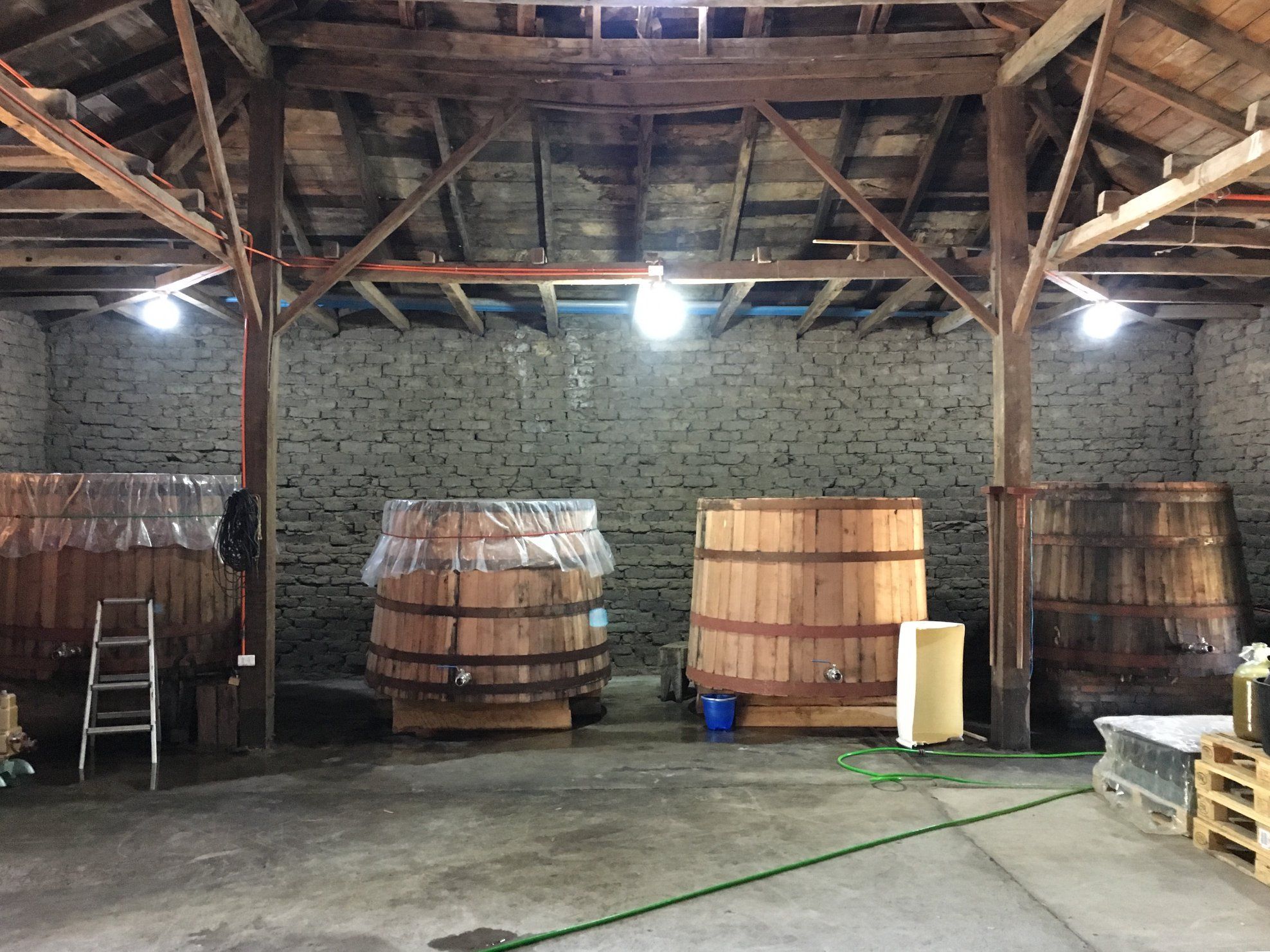
How does Pisador compare to other Pais' produced in Chile, and how is it received by the market?
The Pais we make is more structured and darker, more of an ageing wine. This is because it comes from a warmer, drier place than other Pais grapes. It's different - deeper, more tannic and with more alcohol content. Perhaps less elegant, but more stable. Even if it travels, it's very stable.
There are a few difficulties in the market. One is the price, as the the cost of transportation, customs and all of that raises the price a bit too much. It depends on the countries, but it means that there are still very few Chilean wines of this style in the world. For example, our distributor in Italy only has this one wine from Chile. People like it, but I think we should import more Chilean wines of this kind to make people more aware. They like my wine, but find it too expensive, so it's difficult.
I also have to manage two estates - La Stoppa is a large estate and I still have a lot of work to do there. But I always talk about Chile and every vintage, every harvest, I always have people over from Chile to work in the vineyard in Italy. I want to create a link between Italy and Chile so that young people can come and learn, connect with Italy and also France, but the market isn't easy.
How does this vintage, 2020, compare to others?
2016 was our first, so suffered a little from high tanning. In 2017, we had wild fires close to the vineyard we bought from, so we suffered from that and changed our supplier from there. 2018 was better and more balanced. In 2019, we decided to take the grapes from another place closer to Itata, making Pais under a different label. In 2020, we are now more experienced - we have good suppliers and the result is a more elegant wine. Among our first 5 vintages, it's the best. It's the most balanced.
When is it best enjoyed? Now or later, if people want to age it further in the bottle?
It's nice now. I drink it at home very often. I don't have as much experience ageing the Chilean wines for many years, but so far they have aged well. I will keep some bottles back for sure, but I'd say to open it now.
What’s the story behind the name of the wine, Pisador?
The pisador is the person who makes the pigeage.
Any food pairings you’d recommend?
I'd say less heavy meats - like entrecote, sausages - or rich fish, like mackerel. It also has this balsamic side, so spicy foods as well.
Isabelle's thoughts on Pisador - Deep, intense, with high alcohol (which is hard to feel as its constituent parts are perfectly in balance), this is a really long, concentrated drop. A touch smoky, it shows stewed black fruit (that is not jammy), licorice root and juicy mulberries, alongside a zingy purity that is captivating. Fabulously complex, Pisador is a meditative wine that is worth taking your time over. Serve it in a red Burgundy glass (large bowl) and sit and sip it by the fire. A truly engaging winter warmer.
TOTAL SULFITES: <10mg/L.


